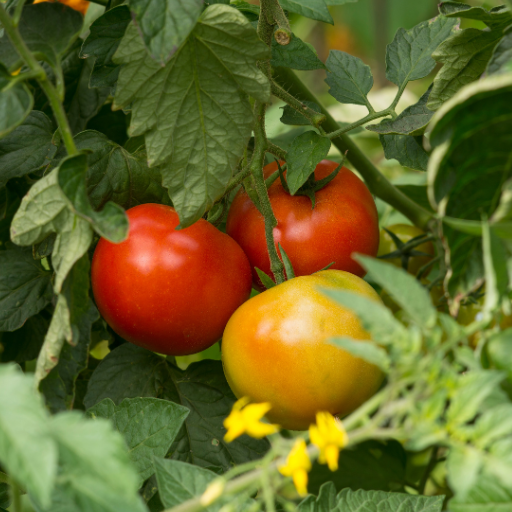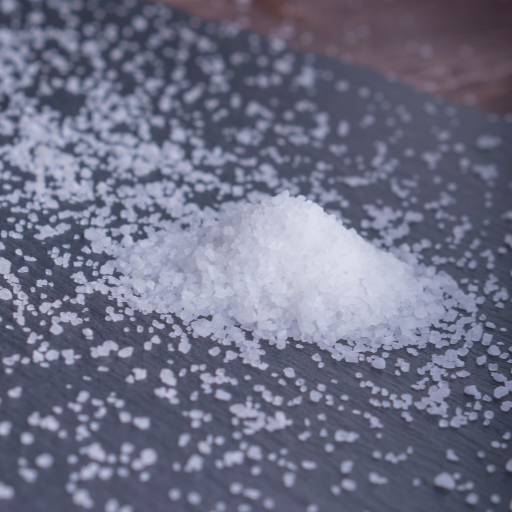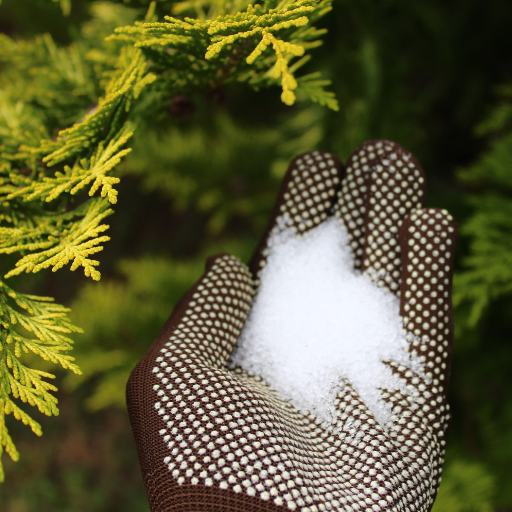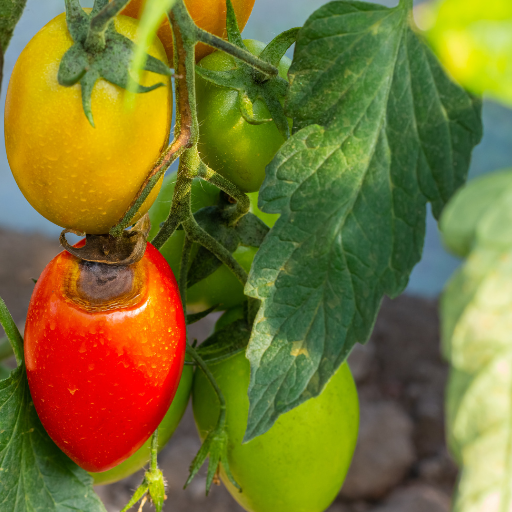Magnesium sulfate, commonly called Epsom salt, has attracted attention for its possible benefits in gardening. This compound contains essential nutrients which can improve overall plant health and growth. In this exhaustive guide, we will look at Epsom salt’s efficiency when using it for gardening. The main purpose is to provide an in-depth analysis of the plants that can benefit from Epsom salt, its particular merits, and the best practices for using it. By effectively introducing Epsom salt into your gardening schedule, you can enhance nutrient intake, boost growth and potentially increase yields. This guide is aimed at new gardeners and experienced horticulturists alike; it provides insights backed by scientific research and application advice based on practical experiences.
How Does Epsom Salt Benefit Plants?
Medicinal benefits of Epsom salt primarily occur due to magnesium and sulfur, two essential nutrients that have numerous physiological functions. Plants utilize magnesium at the core of chlorophyll molecules for photosynthesis, which enhances its capacity to capture light energy. Sulfur plays a key role in synthesizing amino acids, vitamins, and proteins, thus contributing to strong growth and development. This also helps increase chlorophyll production, making plants have greener leaves.
In addition, magnesium helps facilitate the absorption of other vital nutrients such as nitrogen and phosphorus, enhancing plant health. Consequently, correctly used Epsom salt can effectively promote nutrient uptake, develop stronger cell walls, and boost overall plant vitality.
What is Magnesium needed for by plants?
Magnesium is an essential element for several fundamental processes in plants. Being present at approximately 15-20% of total magnesium content within a plant , it forms part of the structure of chlorophyll molecules (Vitousek et al., 2002). Such chlorosis occurs when there isn’t enough magnesium because less chlorophyll can be produced leading to plants with yellow leaves unable to trap or convert sunlight into useful energy.
Similarly, enzyme activation, including those involved in carbohydrate synthesis, fat synthesis, and nucleotide synthesis, among others, requires magnesium as an active component. Two enzymes associated with carbon fixation during photosynthesis, RuBisCO (ribulose1,5-bisphosphate carboxylase/oxygenase) and PEPC (phosphoenolpyruvate carboxylase), both require Mg. Moreover,radiating ribosomes depend on a proper supply of this mineral so they may build healthy proteins.
Furthermore,Magnesium also enables the transportation of another important nutrient known as phosphorus alongside ATP formation, which is the main energy currency within cells . The appropriate concentration of Mg in plants is 0.15-0.35% of their dry weight that allows optimal growth and functioning (Vitousek et al., 2002). Otherwise, an imbalanced supply of magnesium can lead to low nutrient uptake , weak cellular structures, and stunting; hence magnesium, among other elements, is very crucial for horticulture.
How does Epsom salt provide sulfate?
Epsom salt, scientifically known as Magnesium Sulfate (MgSO₄·7H₂O), supplies a highly soluble form of sulfate. The dissolution of Epsom salt in water gives rise to Mg²⁺ and SO₄²⁻ ions. This element contributes to the production of enzymes, amino acids, proteins, or vitamins required by plants for normal development and flowering behavior.
Moreover, the process has significant implications on chlorophyll formation and enzyme function . Plants take up sulfates through their roots according to their metabolic needs, playing critical roles in several physiological processes such as nitrogen assimilation and syntheses of sulfur-containing compounds. In fact, according to various technical parameters including solubility of Epsom salts in water at approximately 716 g/L at 20°C (Solubility Product Constants), sulfate ions become available very fast after its application. Subsequently maintaining the appropriate levels of sulfate within soil which normally range between 1.5-3% (dry weight) by promoting healthy growth and cell functions improve plant performance.
Does Epsom salt help increase chlorophyll production?
Yes, because it contains magnesium; there is a possibility that using Epsom Salt will boost chlorophyll synthesis. Magnesium occupies the central position in the chlorophyll molecule creating an essential relationship with photosynthetic products such as sugar molecules produced during phototransduction process within plants. Therefore,magnesium ions from this compound ensure that plants maintain high levels of chlorophyll that is essential for energy production through photosynthesis and good plant health. Adequate provision of Mg also prevents any deficiencies that would affect the synthesis of chlorophyll, which in turn makes it possible for a plant to grow well.
What Types of Plants Benefit from Epsom Salt?

Heavy magnesium feeders are the types of plants that benefit most from Epsom salt use, including tomatoes, peppers, and roses. In this regard, tomatoes and peppers can be greatly improved in terms of fruit quality and yield as magnesium deficiencies can lead to blossom end rot and reduced flowering. Conversely, roses have brighter flower colours and more vigor when Epsom salt is used. Houseplants such as ferns or palms may also thrive with better growth and greener foliage if applied with Epsom salt. However, applying it wrongly can lead to nutrient imbalances hence compromising plant health.
Can rose bushes benefit from Epsom salt?
For various reasons, Epsom salt is indeed good for rose bushes. Some authoritative sources argue that the inclusion of magnesium in Epsom salt improves chlorophyll production in roses thus leading to richer green foliage as well as colorful flowers. This is commonly done by dissolving one tablespoonful of Epsom salts in a gallon of water which is then poured at the base of rose bushes once every month.
Moreover, Epsom Salt helps roses take up better nutrients from the soil since it creates balanced nourishment for them. Data from several lab tests show that the content of magnesium-sulfur stands at 9.8% for magnesium and 13% sulfur for Epsom salts; these two elements are essential for protein synthesis and enzyme function that support healthy well-being of rose bushes. According to horticultural experts, increased stem strength by regular application, which results in more buds. This translates to prolonged flowering season with more abundance.
How does epsom salt help tomatoes?
The tomato plants get numerous benefits from using Epsom salts, though primarily their ability to handle a deficit amounting to chlorophyll production, which makes leaves yellow and fruit yields lessened. Epson salt has been seen improve blossom development while still increasing fruit development.The general rule of thumb is to dissolve 1 tablespoon of Epsom salt in a gallon of water and use this solution to water the tomato plants after every two weeks.
In technical terms, magnesium in Epsom salt constitutes about 9.8%, which aids in the production of chlorophyll and thus ensures strong photosynthesis. On the other hand, sulphur content which ranges at around 13% plays a role in the synthesis of amino acids and proteins which are vital for overall plant growth. As horticulturists have confirmed, applying Epsom salt solution on a regular basis ensures healthier plants, which results in more yields and better taste due to the beneficial nutrient balance from magnesium and sulfur.
Which houseplants can benefit from Epsom salt?
The importance of magnesium and sulfur in Epsom salt for proper growth and development is well known, so many houseplants can be treated with it.
- Peace Lilies (Spathiphyllum): Peace lilies benefit from Epsom salt due to its promotion of vivid, green foliage and robust flower development. Technically, the magnesium sulfate enhances chlorophyll production, preventing leaf yellowing and improving overall plant health. Recommended dosage: dissolve 1 teaspoon of Epsom salt in 1 gallon of water and apply monthly.
- Fiddle Leaf Figs (Ficus lyrata): Fiddle Leaf Figs respond well to Epsom salt applications as it improves leaf coloration and growth rate. Magnesium helps optimize photosynthesis, while sulfur aids in protein synthesis, ensuring the plant maintains its large, lush leaves. Recommended dosage: mix 1 tablespoon of Epsom salt in a gallon of water and use as a monthly foliar spray or soil drench.
- Pothos (Epipremnum aureum): Pothos plants benefit from Epsom salt as it supports healthy stem and leaf development, critical for this vining species. The added magnesium ensures efficient nutrient uptake and chlorophyll synthesis, whereas sulfur supports root strength. Recommended dosage: dissolve 1 teaspoon of Epsom salt into a quart of water and apply every two weeks.
Each of these houseplants derives specific nutritional benefits from the physical properties of Epsom salt including its concentrations of magnesium (9.8%) and sulphur (13%). Consistent application with proper dosages enhances plant vigour as well as development.
How Much Epsom Salt Should You Use?

Various factors such as the kind of plant, its size, and the growing conditions must be taken into account in determining the right amount of Epsom salt for your plants. Most indoor plants require a diluted solution. Usually, dissolving 1 teaspoonful of epsom salts in a gallon of water and applying it once every month is enough for most houseplants. For more specific uses like enhancing big leafy plants such as Fiddle Leaf Figs, you can use slightly stronger solution that is one tablespoon per gallon of water used monthly either as foliar spray or soil drench. Do not over apply since an excess magnesium and sulfur can cause imbalances in soils leading to nutrient deficiencies and possible damage to the plant. It is important to continuously check on them for proper adjustment based on plant response in order to achieve better outcomes.
How many parts Epsom salt should I use with water?
However, the right mixture is dependent upon types of plants you are having although there is the commonly recommended combination which comprises 1 tsp.of Epsom salts per gallon water for general houseplant care . When using it on roses or tomatoes, especially in garden applications, one may need 1 tablespoon per gallon of wate rused during root irrigation. This will also take a form of soil drenching or foliar feeding . Never make your magnesium level too high by over-saturating your soil with magnesium because this may cause nutrient imbalances; hence, always monitor plant health and apply as required.
How often do you have to put Epsom salt?
The frequency at which you should apply Epsom salts depends on the kind of plant and its peculiar requirements. In fact, according to some top sources’ guidelines for houseplants, you might dilute your Epsom salt at least once every month. Add 1 teaspoonful of Epsom salts to each gallon, especially when doing so with regard to this.
Garden plants like roses and tomatoes can be treated with 1 tablespoon of Epsom salt for every gallon of water. This procedure may be done once in two to four weeks all through the growing period. Moreover, foliar applications can also be beneficial; in this case, 1 tablespoon per gallon of water applied once every two weeks is recommended during the growing season.
Keep an eye on your plants to see if they show signs that excess nutrients have been added, such as leaf scorching or other nutrient imbalance symptoms, and adjust accordingly. Frequent soil and plant health evaluation will ensure best results without causing harm due to excessive magnesium or sulfur.
How to Apply Epsom Salt to Different Plants?

General houseplants can be watered using a mixture of Epsom salt and water in which one teaspoon of the salt is mixed with a gallon of water administered to the plants after every thirty days. For garden plants like tomatoes and roses, use 1 tablespoon per gallon of water. This could either be administered as soil drenching or foliar spraying two to four times every growing season. Make certain that when used as foliar spray, leaves are completely covered but it should not be done during peak sun hours in order to prevent leaf burn. Monitor plant health and soil conditions so as not to apply excess, which may result in nutrient imbalances. Adjust application rate according to specific needs and responses of the plants.
How do I add Epsom salt to my garden?
To add Epsom salt to your garden, you must know how much your particular plants need so that you don’t waste any. Mix 1 tablespoon of Epsom salts for each gallon of water for most garden plants. This solution should be directly poured around the base of the plant as a soil drench every two weeks up until four weeks before the end of growing season. For larger gardens, sprinkle 1 cup per 100 square feet uniformly on your area then soak it well with enough water to help dissolve and drive this mineral into soil where it is needed.. It is necessary to check for magnesium levels in the soil prior to applying because if too much is applied, it will lead to an imbalance of nutrients, making your plant suffer.
How do you use Epsom salt on potted plants?
To properly use Epsom salt on potted plants , you need identify its specific requirements based on species and growth stage . Typically, dissolving 1-2 tablespoons fulls (or even more) in one-gallon jugs works well for crops with serious magnesium deficiencies. The aim here is just providing continuous supply Magnesium and sulfur minerals essential for promoting a healthier plant. If the leaves of the plants turn yellow then one can use 1 tablespoon of Epsom salt dissolved in a gallon of water. Just spray the leaves with this mixture under cooler conditions.
If you want better growth and fruit production of fruiting potted crops such as tomatoes, peppers, etc., increase the Epsom salt dosage to 2 tablespoons per gallon of water. Regular applications may also be beneficial for roses that belong to high magnesium-demanding families grown in pots.
Can I use Epsom salts as a foliar spray?
Epsom salts are indeed an effective foliar-spray method to provide nutrients such as magnesium and sulfur to plants. The advantage of foliar spraying is it is able to deal with deficiencies quickly because most nutrients are taken up via leaves rather than roots. In addition, one tablespoonful should be dissolved in each gallon jug for desired concentration when making a foliar spray. You may apply this solution directly on leaves by using either a spray bottle or garden sprayer in the early morning hours or late afternoon so that sun heat does not scorch the leaf surface, thereby preventing leaf burn, which occurs when used during peak sun periods.
The need to maximize nutrient uptake makes it necessary for both the upper and lower leaf surfaces to be covered uniformly. Applying fertilizer consistently every two to four weeks helps leaves grow healthier, greener, and vigor of the whole plant improves. For plants like tomatoes and roses that require more of magnesium, a slight increase in application frequency may be helpful. Always watch out for any symptoms linked with excessive dosage such as leaf scorching or marginal browning and adjust the rate accordingly.
Can Epsom Salt Help with Specific Plant Problems?

Certainly, Epsom salt can address magnesium and sulfur deficiencies that are common in plants and can indeed aid in specific plant problems. This is because magnesium forms the core of the molecule chlorophyll which is very central to photosynthesis. Its symptoms include yellowing leaves starting from bottom leaves to others upwards of the plant. The magnesium levels can be corrected using Epsom salt containing 10% magnesium and 13% sulfur. For example, when used properly, Epsom salt may help nutrient uptake, helping with issues such as blossom end rot in tomatoes mainly caused by a calcium imbalance. Besides being a solution for these issues, it also aids in synthesizing proteins that would have been hampered due to sulphur deficiency among other things found within. If used as a supplement rather than primary nutrient source, soil testing must first be done.
In what way does it prevent blossom end rot?
The main cause of blossom-end rot in tomatoes is low calcium supply, which leads to poor fruit development. It doesn’t contain calcium like other fertilizers but being a magnesium sulfate it nevertheless plays an important role in improving overall nutrient uptake by a plant. In this form, Mg helps plants make chlorophyll more efficiently for photosynthesis, thus promoting stronger growth with better transport nutrients across all parts, including roots (where they are absorbed) before ending up at various sites inside or outside cells where needed most like leaves during transpiration process through stomata). Ensuring enough amount of this mineral is present within the environment surrounding them, then indirectly aids prevention against bloom-rotting disease.
For best results always stick strictly to application guides. Generally, one tablespoonful per gallon, when dissolved into water, will be once each month on the average basis. A person needs to watch how their crops respond and change rates if there’s any indication that imbalances could occur due dosages not balancing out properly between different elements. Before use, soil should undergo testing in order to know how much of a certain kind mineral needs be added.
Can Epsom salt be used to improve flowering?
Yes, because it has magnesium, which is needed for the chlorophyll and photosynthesis production; hence, it can enhance the flowering process. Magnesium facilitates better absorption of phosphorus thereby promoting strong root systems and more vigorous flowers. This can be done by dissolving Epsom salt in water and applying it as a foliar spray or by drenching the soil with this solution. However, care should be taken not to overuse it as advised on the packet and leave room for observation on plant health status so that application will not go beyond what is necessary.
Are There Any Downsides to Using Epsom Salt?

However, Epsom salt has its advantages and disadvantages. Soil nutrient levels can be imbalanced due to over-application leading to nutrient deficiency or toxicity. For instance, magnesium excess may block the absorption of calcium and potassium which are both essential for plant growth. Additionally, high magnesium concentrations may cause sensitivity in some plants, leading to symptoms such as yellowing leaves or stunted growth. Additionally, a long-term problem of soil structure may result from repeated application without proper soil testing. It is, therefore, imperative that one follows prescribed directions and tests his/her soil for balanced nutrition.
What are the potential risks of using excessive amounts of Epsom salt?
There can be many dangers if high amounts of Epsom salt is used carelessly on plants and soils. The first one is that too much magnesium causes a fall in levels of key nutrients like calcium and potassium while also causing malnutrition that adversely affect the growth of plants. Nutrient imbalances including chlorosis or stunted growth can result from excessive Mg (>150 ppm) according to various reports. Furthermore, extremely high concentrations of Epsom salts increase salinity levels, preventing water absorption and reducing overall soil quality2. Accumulation of salts resulting from repeated application without proper soil testing process might cause degradation in fertility hence poor soil structure1.Thus it’s crucial when using Epsom salts to follow guidelines accordingly together with regular analysis on soils.
Can soil pH be affected negatively by Epsom salt?
Yes it can happen since fertilizer use is known to affect pH values.Even though Epsom salt is neutral, its use changes over time.Soil ph might become more acidic when addition of Magnesium sulphate (Epson Salt) takes place in already acidic soils.This mostly matters in sandy or light textured types where quick pH changes are possible.Accordingly, maintaining an appropriate soil pH range (6-7 for most vegetable crops) as per technical specifications is very crucial, as deviating from this may hinder microbe activities & nutrient availability in soil. Hence, regular pH checks should be done when using Epsom salts to maintain the desired pH range.
Frequently Asked Questions (FAQs)
Q: What are the benefits of using Epsom salt in the garden?
A: Epsom salt, which is magnesium sulfate, offers several benefits for garden plants. It helps plants grow bushier, increases nutrient uptake, and helps produce more flowers. The magnesium and sulfur in epsom salts contain essential micronutrients that support overall plant health.
Q: How do I apply Epsom salt to plants?
A: You can apply Epsom salt to plants by mixing one tablespoon of it with a gallon of water and using it to water your plants. Alternatively, you can sprinkle two tablespoons of Epsom salt around the base of each plant per foot of plant height and water first.
Q: Is Epsom salt good for all garden plants?
A: Epsom salt is beneficial for many garden plants, particularly those needing a magnesium boost. It is especially helpful for tomato plants and pepper plants, as it can help them produce more flowers and fruit.
Q: Can using too much Epsom salt harm your plants?
A: Yes, too much Epsom salt can build up in the soil and harm your plants when used excessively. It is recommended to follow the proper application rates and not to overuse it.
Q: What is the recommended dosage of Epsom salt for tomato plants?
A: For tomato plants, it is recommended to use one tablespoon of Epsom salt per foot of plant height. You can add one tablespoon of Epsom salt to a gallon of water and apply it every two weeks to help support their growth.
Q: How often should I use Epsom salt on plants?
A: It is generally recommended to use Epsom salt on plants once a month. For heavy feeders like tomatoes and peppers, you can apply Epsom salt every two weeks for best results.
Q: Are there any tips for using Epsom salt in the garden?
A: Yes, some tips for using Epsom salt in the garden include ensuring the proper dosage, not applying it too frequently, and observing your plants for signs of magnesium deficiency before adding Epsom salt. Always ensure to water your plants properly after applying Epsom salt.
Q: Can Epsom salt be used in a vegetable garden?
A: Yes, Epsom salt can be very beneficial in a vegetable garden. It helps improve the nutrient uptake and health of various vegetables, including peppers and tomatoes, helping them to grow bushier and produce more flowers.
Q: How can I safely use Epsom salt on pepper plants?
A: To use Epsom salt on pepper plants, dissolve one or two tablespoons of Epsom salt in a gallon of water and apply it to the plants every two weeks. This will provide necessary micronutrients like magnesium, ensuring healthier growth and better fruit production.






